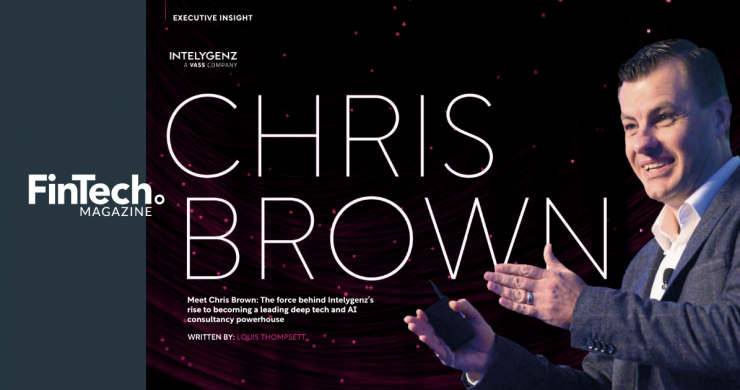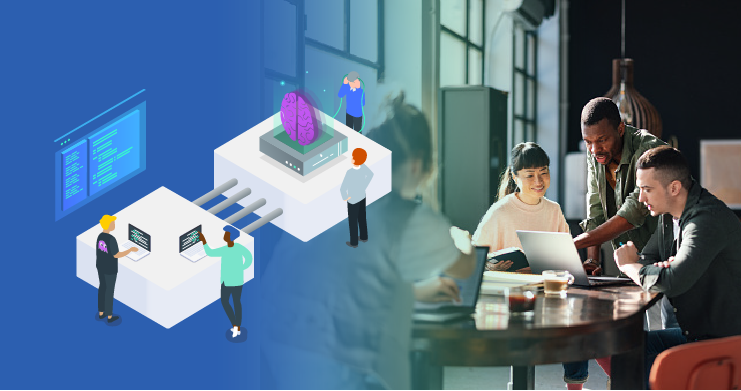Decade Round-Up: 5 of the Most Relevant A.I. Innovations of the 2010s

The 2010s are finally over, and what a decade it was. Over the last ten years, we’ve seen technological advancements evolve to unprecedented levels which have changed the way we live and work.
In fact, it’s predicted that by the end of 2020, personal digital assistants and bots will influence 10% of all sales and that by 2021, 75% of commercial enterprise apps will have A.I. built-in, and over 50% of consumers will interact with A.I.
From humble beginnings such as Apple’s release of their Siri voice agent in 2012 to scarily-scarily realistic Deep Fakes, here’s a quick run-down of some of the most important A.I. innovations of the 2010s.
1. Internet of Things (IoT)
If you take a look around the room you’re currently in, there’s a very high chance that there is at least one piece of IoT technology around you. From smart home technology to voice assistants, this technology has changed the way we live our normal lives.
A lot of the technology involved in IoT includes A.I. at the core. Voice assistants such as Google Home, Amazon Alexa, and Apple’s Siri all use A.I. to listen to what is said to them and carry out actions automatically. Want to play your favorite album while cooking, or send an email without typing? A.I. can do that for you.
When used in conjunction with other IoT devices, A.I. can go even further. With the invention of various connected home devices, A.I. gives us the power to control the temperature in our homes and even see who’s at the door without even being at home.
2. Deep Learning
Although the history of Deep Learning spans all the way back to the 1940s, the 2010s was when we saw it get truly under development and into the mainstream. Deep learning technologies have infiltrated almost every aspect of technology, and it’s likely that you’ve used it many times before without even realizing it.
Deep learning and machine learning are two very similar concepts, but there is a difference between them. There are plenty of examples of Deep Learning algorithms in action, some of which exist in the palms of our hands, but let’s discuss three of some of the most impactful examples of Deep Learning A.I. innovations:
Language Recognition
Deep learning machines have now developed the ability to detect and understand not only the majority of languages but also a wide range of dialects within a language too. There are A.I. machines that can detect which language a user is speaking. The more a deep learning system hears it, it can trigger another A.I. which specializes in the particular dialect spoken and carry out any voice commands accurately.
Similarly, deep learning A.I. can be used to auto-translate pieces of written and spoken text. Google translate can understand the languages of written text from even just a photograph and translate it in real-time, making it incredibly useful for travelers! Plus, Google Pixel Bud earphones use similar technology to understand a language spoken and translate it into English in real-time. It’s not perfect yet, but this technology could pave the way for revolutionary advancements that help break down language barriers further.
Text Generation
Text generation A.I. has now made it possible to transform anyone, or rather any machine, into a writer. Using deep learning algorithms, machines have the ability to analyze the text, syntax, and grammar of any piece of writing. Once it has learned this, it is then able to continue writing brand new text without any human input and create its own piece of text.
This process is very similar to the software we have created in the past, which analyzes the data sources and information within a piece of writing, and uses that information to generate data charts automatically.
Healthcare
Deep learning isn’t just useful for automating everyday tasks and making our jobs a little easier. Now, this technology is being used to make monumental strides in the world of healthcare.
Did you know that deep learning A.I. models are fast approaching similar levels as human doctors when it comes to being able to accurately detect some diseases? There are many different examples of deep learning A.I. being used in healthcare, some of which are used to diagnose different forms of cancer, improve pharmaceutical drug properties, and so much more.
3. Deep Fakes
The power of A.I. innovation means we need to ensure it’s in the right hands. In 2017, the rise of deep fake videos sent the internet crazy and before long, many of us were questioning what was real and what wasn’t. With videos depicting political figures such as Barack Obama and Donald Trump making speeches that could incite global war, it highlighted just how dangerous deep fakes could be. It’s not just the alarming accuracy of how Deep Fakes look, but machine learning technology can now be used to literally rewrite and change a person’s speech in any video. Luckily, this aspect is not currently available to consumers.
In fact, deep fake A.I. has become so prolific that social media platforms such as Facebook have banned them for fear that they may be used in nefarious ways.
4. Automation
The 2010s welcomed in the age of automation, where the everyday process to the very cars we drive can now be fully automated to make our lives just a little bit easier. With self-driving cars now in circulation, it only lends the question – will humans even need to drive at all in the future?
It’s not just cars that can be fully automated, but businesses and consumers alike are enjoying the benefits of A.I. automation. IPA, or Intelligent Process Automation, is a process that automates workflows and processes to simplify tasks without the need for human intervention. These tasks can range from anything, such as processing transactions, triggering automatic responses, communicating with systems, and so much more.
5. A.I. Robotics
With the emergence of self-driving cars, smart homes, and now A.I. robotics, we truly are living in The Future. These A.I. innovations are now being used in robotics to take automation to a physical level, not just digital.
By now, most of us are aware of Sophia, an A.I. robot who became the first robot citizen in the world. She may be the most memorable A.I. robot to have emerged in the 2010s, but she’s certainly not the only one. Over the last decade, robots were increasingly used across all aspects of businesses to make manufacturing and development easier, safer, and more efficient than ever. From assembly and packaging all the way to customer service bots, robots are fast becoming a key part of our everyday lives.
The 2010s: A Revolutionary Era
The 2010s were a revolutionary time for the development of A.I. and we bore witness to such huge innovations within a relatively short space of time. Inventions that may have never felt possible suddenly became real, and our day-to-day lives have been impacted by these A.I. innovations in more ways we can even realize.
Make sure you stay at the forefront of the latest software trends by checking out our resources page.

Get the latest roundup of the most important, interesting and stories from the past week. In your inbox every Saturday by 10am.
Related Articles you might like
Intelygenz President Chris Brown shares vision to revolutionize the finance sector in interview with FinTech Magazine
Intelygenz President Chris Brown was recently featured in an in-depth interview with FinTech Magazine, in which he outlined his mission […]
View Blog PostBridging the gap: From AI concepts to production success
In recent years, the conversation around artificial intelligence (AI) has shifted from theoretical possibilities to tangible realities. As businesses strive […]
View Blog PostUnpacking Deep Tech & AI Solutions at Finovate Spring
Finovate Spring is here from 21 to 23 May 2024. A conference to showcase cutting-edge banking and financial technology. This […]
View Blog Post

